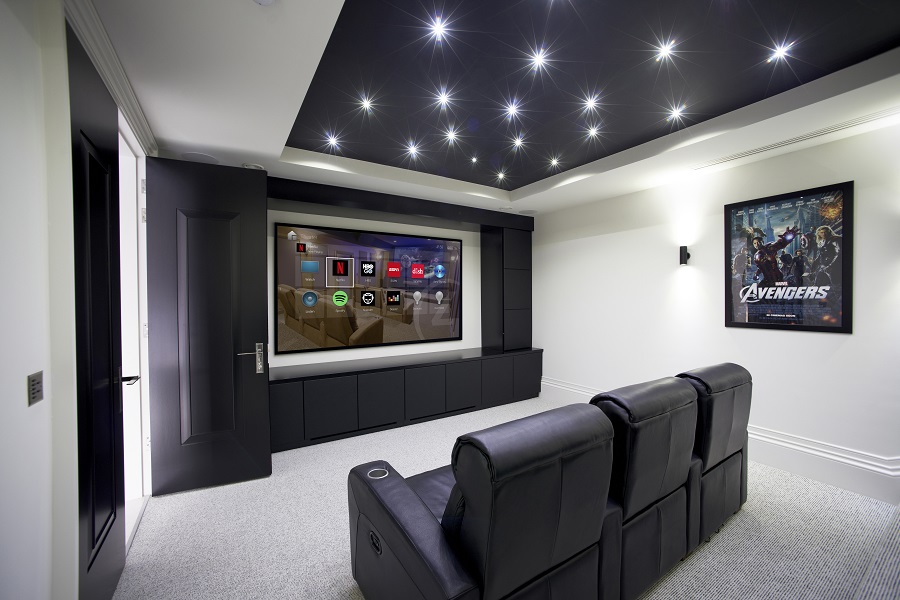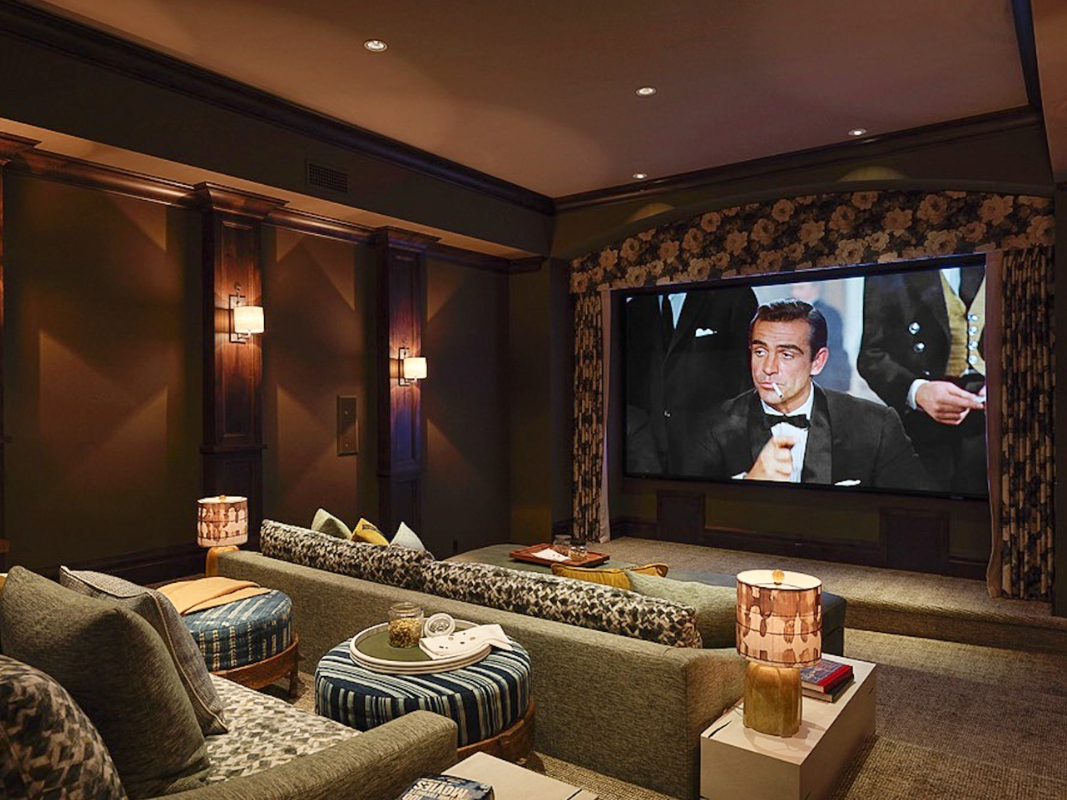How to Discover the Top Home Theater Tampa Installation Professionals
How to Discover the Top Home Theater Tampa Installation Professionals
Blog Article
Home Theater 101: Everything You Required to Know for a Cinematic Experience at Home
Developing a home cinema that matches the cinematic experience of a commercial theater involves cautious factor to consider of several elements, including screen choice, sound systems, and space format. Whether you are contemplating the optimal display dimension or the complexities of surround noise, comprehending these principles is necessary.
Choosing the Right Screen
When establishing a home movie theater, picking the ideal screen can make or damage the seeing experience - home theater installation tampa. The display works as the centerpiece of your arrangement, influencing picture quality, seeing angles, and general aesthetic. Key aspects to consider consist of display kind, resolution, and size
Initially, figure out the appropriate display size based upon your room measurements and seating distance. A general standard is to sit about 1.5 to 2.5 times the angled screen size for optimum watching. Next, select between various screen types, such as fixed-frame, mechanized, or retractable displays, each offering distinctive advantages. Fixed-frame displays generally give the most effective picture high quality, while mechanized options permit flexibility in space use.
Resolution is one more crucial variable. For a truly immersive experience, take into consideration a screen designed for 4K or even 8K material, ensuring sharpness and clarity. Additionally, think about the display's gain, which impacts brightness and comparison; a greater gain can enhance illumination in well-lit rooms, while a lower gain may be better for darker settings.
Picking Sound Equipment
Audio equipment is a critical element of any type of home movie theater system, significantly improving the general watching experience. The option of audio equipment can establish the deepness, quality, and immersion of sound, important for creating a cinematic ambience.
When choosing audio devices, take into consideration a border stereo, which normally includes a receiver, several speakers, and a subwoofer. A 5.1 or 7.1 channel system is suggested, where the very first number stands for the audio speakers and the second the speaker, supplying an immersive soundscape. The receiver is the heart of the system, handling audio and video clip signals, and should sustain modern layouts like Dolby Atmos for an improved spatial experience.
Quality speakers are important; try to find models that provide a well balanced sound account with excellent bass response. Floor-standing audio speakers can produce richer audio, while bookshelf alternatives save room. Additionally, take into consideration cordless alternatives for convenience of setup, although wired systems usually provide premium efficiency.

Optimal Seating Arrangements
Producing a perfect home theater experience pivots dramatically on optimal seating arrangements. The plan of seats plays an important function in both convenience and checking out top quality, straight influencing the general cinematic experience.
First, consider the screen dimension and watching range. A typical standard is to place seats at a range about 1.5 to 2.5 times the diagonal dimension of the screen. This makes sure an immersive experience without straining the eyes.
Next, altitude is essential. If your seats remains in a tiered format, the back rows must be higher than the front to prevent obstructions. For level seating, guarantee that the front row is not also close to the display, and that everybody has a clear line of vision.
In addition, take into consideration the plan in terms of social characteristics. Group seats can enhance the common experience, while specific seats might be preferred for individual watching.

Finally, prioritize comfort with ergonomic seats that sustains prolonged watching periods. Incorporating recliner chairs or cushioned seats can substantially improve the experience, making the home cinema a preferred location for both home entertainment and relaxation.
Lighting and Ambiance
Effective illumination and setting are crucial parts of a well-designed home movie theater, as they dramatically influence the seeing experience. The appropriate lighting can boost the motion picture feeling, while poor options can take away from it. For optimal outcomes, consider a split illumination strategy that consists of ambient, task, and accent illumination.
Ambient lighting provides general illumination, guaranteeing that the room is not completely dark, which can stress the eyes. Dimmer buttons are very recommended, enabling modifications based upon the web content being watched. Task lights, such as wall surface sconces or floor lamps, offers practical lighting for tasks like reading or browsing the area without interrupting the total environment.
Accent lights can be used to highlight architectural functions or develop centerpieces, adding depth and interest to the space. LED find out here now strip lights behind screens or along shelves can give a subtle radiance that enhances the visual experience without frustrating the viewer.

Wiring and Installation Tips
A well-planned circuitry setup is critical for attaining optimum efficiency in your house theater system. Proper electrical wiring not just ensures top quality audio and video clip signals but additionally improves the overall visual of your space. Begin by drawing up your format, determining where each element will be positioned, including your screen, audio speakers, and receiver.
When selecting cords, visit site prioritize premium, suitably gauged electrical wiring to reduce signal loss. HDMI cords need to be used for video clip connections, while audio speaker wire should match the specs of your speakers and amplifier. Select in-wall rated cables to adhere to safety and security standards and keep a tidy appearance.

Final Thought
In summary, developing a phenomenal home cinema experience calls for cautious factor to consider of numerous aspects, including display selection, audio tools, seating arrangements, lights, and wiring. Each component plays a critical role in attaining optimum efficiency and setting, inevitably boosting the enjoyment of home amusement. By prioritizing these aspects, a cinematic environment can be efficiently duplicated, enabling immersive viewing experiences that match conventional theater settings. Attention to information in each area is necessary for total contentment.
Producing a home cinema that matches the cinematic experience of an industrial theatre includes mindful consideration of several parts, including display option, sound systems, and space layout.When establishing up a home movie theater, choosing the right display can make or damage click for more info the checking out experience. Next off, pick in between different display kinds, such as fixed-frame, mechanized, or retracting screens, each offering distinctive benefits. For a genuinely immersive experience, take into consideration a screen developed for 4K or also 8K material, ensuring sharpness and clearness.In recap, producing a phenomenal home movie theater experience calls for careful factor to consider of various components, consisting of screen choice, audio equipment, seating plans, lights, and wiring.
Report this page